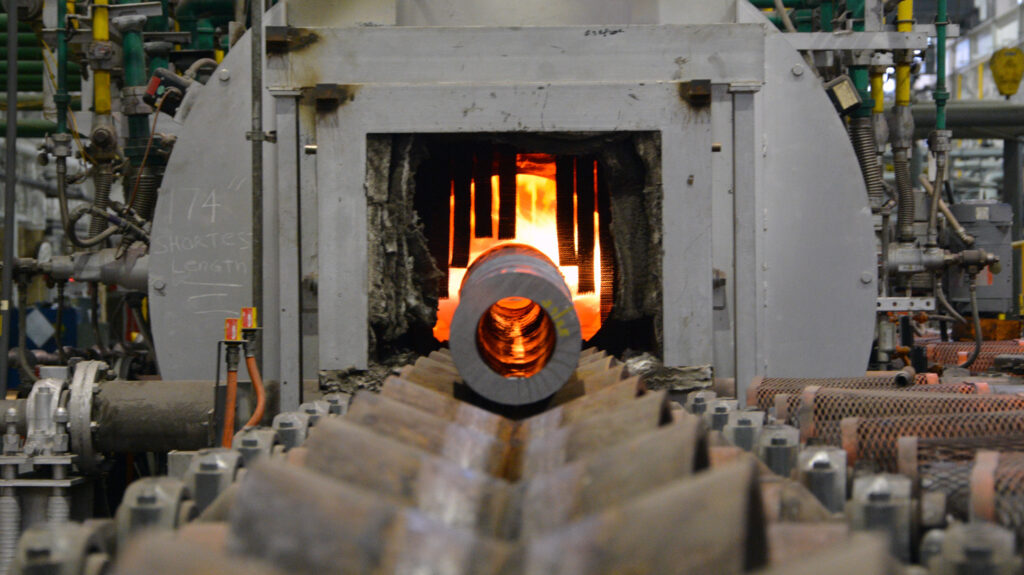
A 155 mm artillery tube enters a heat treatment furnace at Watervliet Arsenal in New York as part of a process called “austenitizing.”(US Army/John B Snyder)
WASHINGTON — Over the past three months, the US Army’s Watervliet Arsenal has been forging more cannon tubes at a rate not seen in 40 years, according to Maj. Gen. Michael Lalor, the commander of the Tank-automotive and Armaments Command. And while there is still room to grow inside the arsenal, he said, secondary sources could offer the service with a glidepath to quickly scaling production.
As part of the service’s organic industry base, Watervliet Arsenal in Albany, NY, is the sole producer of cannon tubes inside the US weapons like M1 Abrams tanks, the M109 Paladin self-propelled howitzer, and the M777 lightweight howitzer. That meant there was a sudden production influx in 2022 when Washington began rushing howitzers to Ukraine to fend off Russian troops.
“Use of that [M777] howitzer and the volume it’s been used definitely confirmed the accuracy, the precision of that system, and also its endurance that it could fire: Those tubes had longer life than originally expected,” Lalor told reporters on Wednesday after an Association of the US Army event.
“In terms of production, because you’re firing at that rate … it drives a requirement for additional canon tubes at a rate we haven’t seen in generations,” he added. While steering clear of specific numbers, Lalor estimated that Watervliet has likely tripled production over the past three years.
To accommodate increased production, the service revamped its manufacturing processes and modernized the facility. Although the two-star general said he believes the facility still has capacity to grow, lessons from the war in Ukraine have showcased industrial base vulnerabilities and the need to have multiple production sources to avoid a single point of failure that could leave the service without a cannon producer.
“I think we can produce more,” he added. “I also think it suggests that, you know, inside the army and industrial base, we’re definitely looking at it that secondary sources are going to be helpful too in a future conflict that we may have to fight.”
The service has begun examining its options for bringing on secondary sources, and Lalor said it has now identified “multiple” sources that, if given the technical data to produce the tubes, could have production lines up and running within 12 to 18 months.
“That’s if you’re moving fast, because it’s a unique capability,” Lalor said. “But, like anything else in exigence, believe you can produce at a scale and rate faster.”





